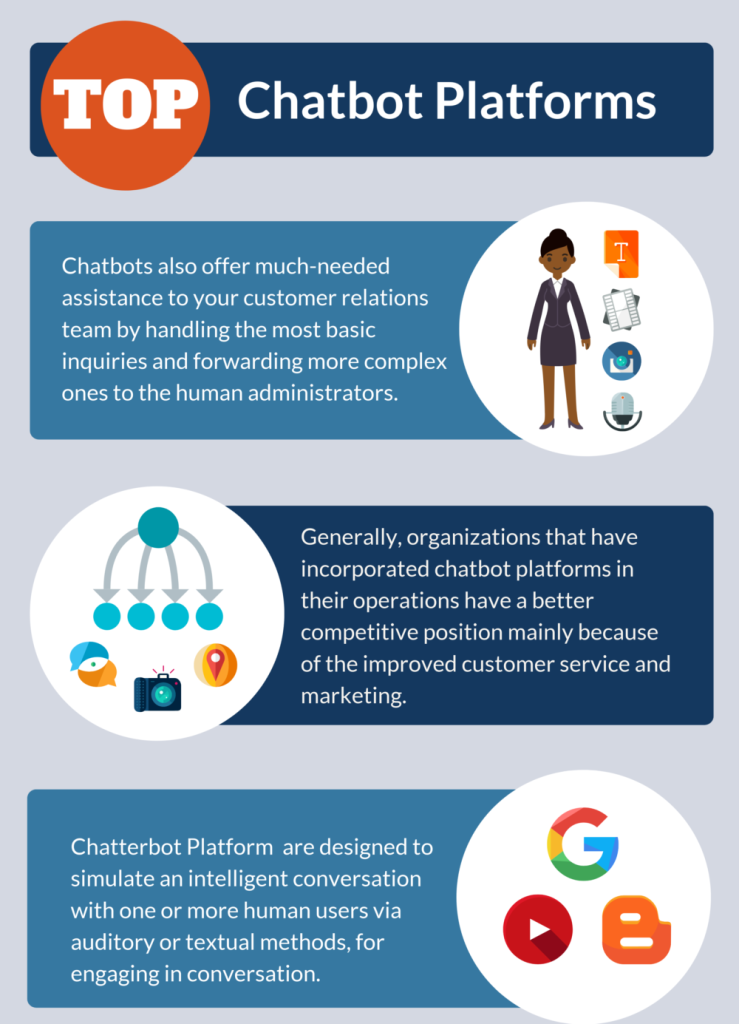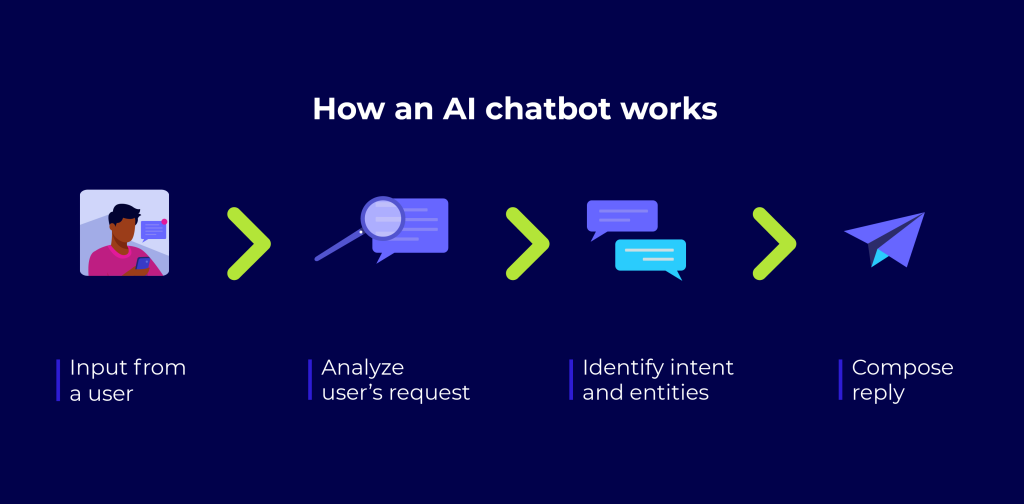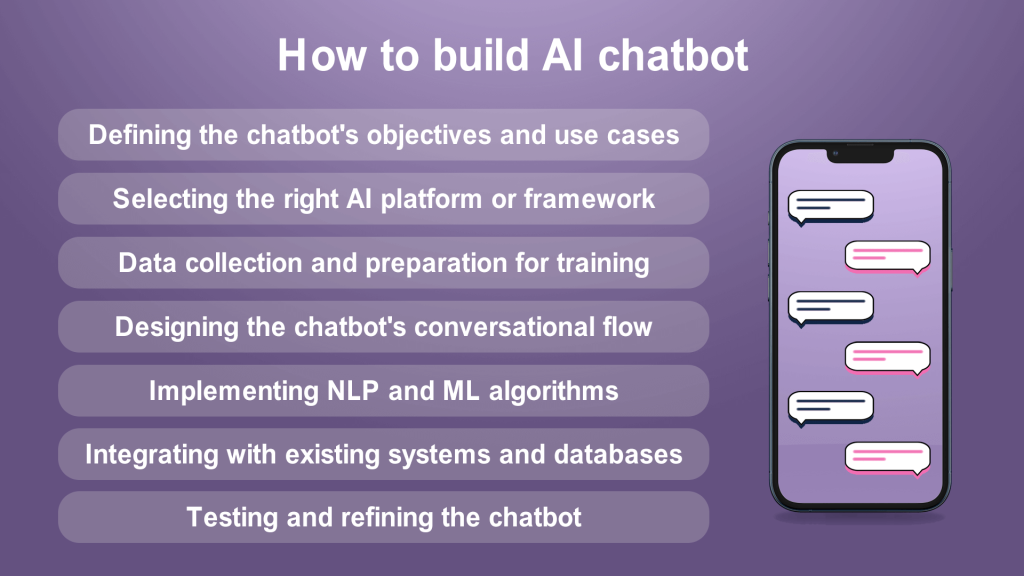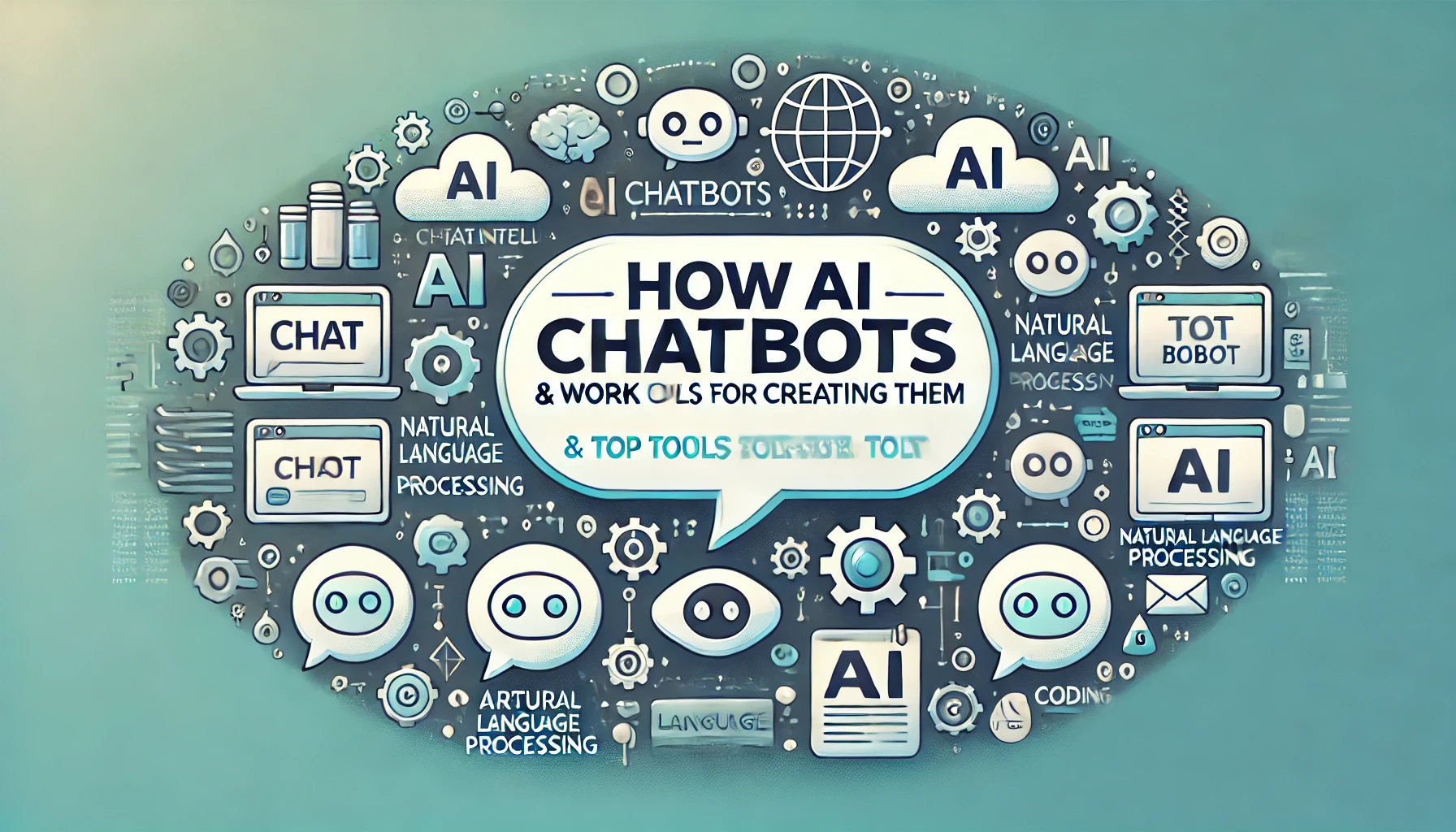In today’s digital-first world, AI chatbots have become transformative tools for businesses looking to streamline interactions, elevate customer experience, and drive operational efficiency. As companies strive to engage users across multiple touchpoints—websites, mobile apps, social media, and messaging platforms—AI chatbots offer an intelligent, automated solution that allows them to maintain seamless, responsive communication with their audiences.
AI chatbots are designed to handle various tasks that were once performed manually, such as answering frequently asked questions, guiding users through complex processes, offering product recommendations, and even closing sales. By automating these repetitive interactions, chatbots free up valuable human resources, allowing businesses to focus on more complex issues and personalized customer care.
The Impact of AI Chatbots on Business

AI chatbots are now pivotal in sectors ranging from e-commerce and finance to healthcare and customer service. Let’s take a closer look at how they enhance core business functions:
- Enhanced Customer Support
- AI chatbots provide 24/7 assistance, ensuring that users receive prompt responses to their questions, no matter the time zone or working hours. They offer instant, data-driven responses, which reduce wait times and improve customer satisfaction. For example, many e-commerce platforms use chatbots to answer questions about order status, return policies, or shipping information.
- Automating Repetitive Tasks
- For routine inquiries and common tasks, chatbots can handle the workload autonomously, allowing human agents to focus on more complex, high-value interactions. In customer service, this could mean automatically handling requests like balance inquiries, password resets, or appointment scheduling, reducing the need for human intervention and minimizing operational costs.
- Improved User Engagement
- With their ability to maintain context, AI chatbots offer an engaging and interactive experience. They guide users through processes step-by-step, suggest products based on user preferences, and provide personalized support. By doing so, they increase user engagement and build stronger brand loyalty.
- Data Collection and Insights
- Chatbots gather valuable data from user interactions, which can be analyzed to gain insights into customer needs, preferences, and behaviors. This data can then inform marketing strategies, product development, and overall business strategy, enabling businesses to align their offerings more closely with customer expectations.
A Look into the Mechanics of AI Chatbots

AI chatbots operate using a blend of cutting-edge technologies, including machine learning (ML) and natural language processing (NLP), that enable them to understand, process, and respond to human language. Here’s a deeper dive into how they work:
- Natural Language Processing (NLP): NLP is a core component of AI chatbots, allowing them to understand and interpret human language. Through NLP, chatbots identify keywords, phrases, and user intent, making it possible to provide contextually accurate responses.
- Machine Learning (ML): Machine learning algorithms enable chatbots to improve over time by analyzing user interactions and identifying patterns. For example, a chatbot might learn that certain phrases indicate specific intents (e.g., “cancel order” versus “order status”), allowing it to respond more accurately in future interactions.
- Context Management: Advanced chatbots maintain the context of the conversation, remembering previous inputs to continue the conversation smoothly. This ability to keep track of conversational context creates a more natural, human-like experience for the user.
- Response Generation: Chatbots generate responses using pre-defined responses (retrieval-based) or through generative AI models. Generative responses rely on sophisticated AI models (such as Transformers) that generate replies based on data, making the bot capable of answering a wide range of queries.
Selecting the Right AI Chatbot Platform

With the growing popularity of AI chatbots, numerous platforms have emerged to facilitate the development of these conversational agents. Selecting the right platform is crucial for creating an effective, business-aligned chatbot. Here are some of the best tools to consider, each with unique features tailored to different needs:
- Dialogflow by Google
- Leverages Google’s powerful NLP technology, making it ideal for multilingual, omnichannel bots. It’s designed for developers who want to deploy sophisticated bots across platforms like Google Assistant, Facebook Messenger, and more.
- Microsoft Bot Framework
- Integrates seamlessly with Azure and Microsoft’s ecosystem. It offers SDKs for multiple programming languages and is particularly useful for businesses already using Microsoft services and products, providing an ideal setup for enterprise environments.
- IBM Watson Assistant
- A robust tool with advanced NLP capabilities that can integrate into customer support systems, CRM, and other business tools. IBM Watson Assistant is known for its customizable and scalable approach, making it a preferred choice for enterprise-level chatbot solutions.
- Rasa
- An open-source platform for building custom chatbots. Rasa offers flexibility in development and deployment, especially valuable for organizations with strict data privacy requirements. It’s a great option for companies with in-house development teams looking for total control over their chatbot logic.
- Botpress
- Another open-source tool, Botpress comes with a visual flow builder, making it easier to create complex conversational flows. Its modularity and JavaScript customizations make it a popular choice among developers looking to design highly tailored chatbot solutions.
Key Considerations for Choosing a Chatbot Platform

When selecting a chatbot platform, consider the following factors:
- Ease of Use and Flexibility: Some platforms, like Tidio and ManyChat, offer a simple drag-and-drop interface that makes bot building easy, while others like Rasa and Botpress offer full customization but require technical expertise.
- Cost and Scalability: Many chatbot platforms have flexible pricing based on usage, which is important for scalability. Open-source options, though they require a more hands-on approach, can be more cost-effective in the long run.
- Data Privacy and Security: For businesses in industries like healthcare or finance, data privacy is paramount. On-premises, open-source options like Rasa allow for local data storage, giving you full control over sensitive information.
Understanding How AI Chatbots Work

AI chatbots use machine learning (ML) algorithms and natural language processing (NLP) techniques to interpret and respond to user input. Let’s explore their working in a step-by-step manner:
- Natural Language Processing (NLP)
- NLP is the process through which chatbots understand human language. It comprises several sub-processes:
- Tokenization: Breaking down sentences into words or phrases (tokens).
- Sentiment Analysis: Determining the emotional tone behind user messages.
- Intent Recognition: Understanding what the user wants, such as asking a question, making a request, or seeking support.
- Entity Recognition: Identifying keywords or specific elements like names, dates, or locations.
- NLP is the process through which chatbots understand human language. It comprises several sub-processes:
- Machine Learning and Pattern Recognition
- Machine learning algorithms enable chatbots to learn from past interactions and improve over time. They recognize patterns in conversations, which helps them provide relevant responses or escalate the conversation to a human agent when necessary.
- Context Management
- Advanced AI chatbots can maintain context across interactions, enabling them to respond based on previous messages or inquiries, enhancing the conversational flow and making interactions feel more natural.
- Response Generation
- AI chatbots have several response-generation techniques:
- Retrieval-based responses: Responses are generated from a pre-defined set of replies, often based on matching patterns in user input.
- Generative responses: In more advanced systems, responses are generated on the fly using deep learning models like Transformer-based networks (GPT models), which allow for dynamic, contextually accurate responses.
- AI chatbots have several response-generation techniques:
- Continuous Improvement through Feedback
- AI chatbots can self-improve by learning from feedback or analyzing patterns from unhandled queries. With continuous monitoring and fine-tuning, they become more accurate and contextually aware over time.
Best Tools for Creating AI Chatbots

Now that we’ve understood how AI chatbots work, let’s explore some of the best tools available to create them. Each tool offers unique features, catering to different needs, from simple customer support bots to highly intelligent conversational agents.
1. Dialogflow by Google
- Overview: Dialogflow is a comprehensive chatbot development platform that leverages Google’s NLP to create conversational agents.
- Key Features:
- Supports voice and text-based interactions.
- Integration with multiple platforms (Google Assistant, Alexa, Facebook Messenger).
- Pre-built agents to jumpstart development.
- Robust analytics and debugging tools.
- Best For: Businesses looking to create robust, multilingual chatbots for web and mobile.
2. Microsoft Bot Framework
- Overview: Microsoft’s Bot Framework provides a powerful platform for developing conversational AI, allowing developers to design, test, and deploy intelligent bots.
- Key Features:
- Integrates with Azure AI services (e.g., NLP, QnA Maker).
- Open-source SDKs in various languages.
- Direct Line API for embedding bots on websites and apps.
- Compatibility with Microsoft Teams, Skype, and other channels.
- Best For: Enterprises using Azure, needing integration with Microsoft products.
3. IBM Watson Assistant
- Overview: IBM Watson Assistant is a popular choice for building AI-powered chatbots for both customer-facing and internal operations.
- Key Features:
- NLP and machine learning capabilities to create accurate conversational agents.
- Easy integration with existing CRM systems and backend applications.
- Highly customizable and flexible.
- AI-based intent recommendations for proactive interaction design.
- Best For: Large businesses needing a customizable, enterprise-grade chatbot.
4. Rasa
- Overview: Rasa is an open-source platform for building conversational AI. It is popular among developers for its flexibility and customization options.
- Key Features:
- Supports both NLU and dialogue management.
- Customizable with Python, allowing for high flexibility in bot design.
- Comes with Rasa X for improved bot management and testing.
- On-premises deployment for enhanced data security.
- Best For: Developers and companies prioritizing data privacy and looking for full control over bot logic and data.
5. Botpress
- Overview: Botpress is an open-source conversational AI platform that enables developers to build chatbots for complex workflows.
- Key Features:
- Visual flow builder for designing conversations.
- Strong NLU capabilities with integrated modules for user input understanding.
- Customizable with JavaScript, allowing tailored bot behavior.
- Ideal for multi-turn conversations requiring context management.
- Best For: Developers and businesses that want an open-source, customizable chatbot platform for complex conversational flows.
6. Tidio
- Overview: Tidio is a chatbot and live chat solution tailored toward customer service and sales automation, particularly for e-commerce.
- Key Features:
- Pre-built templates for common customer queries and workflows.
- Integrates with popular e-commerce platforms like Shopify and WooCommerce.
- Provides insights into customer interactions and performance analytics.
- Drag-and-drop builder for quick setup and customization.
- Best For: E-commerce businesses aiming to enhance customer service and automate FAQs.
7. ManyChat
- Overview: ManyChat is widely used for automating marketing and customer service on messaging platforms, notably Facebook Messenger and Instagram.
- Key Features:
- Integration with social media platforms for targeted marketing.
- User-friendly interface for building conversational flows.
- Supports multimedia messages and automates responses to comments.
- Growth tools for lead generation.
- Best For: Businesses focusing on social media marketing and lead generation through messaging platforms.
